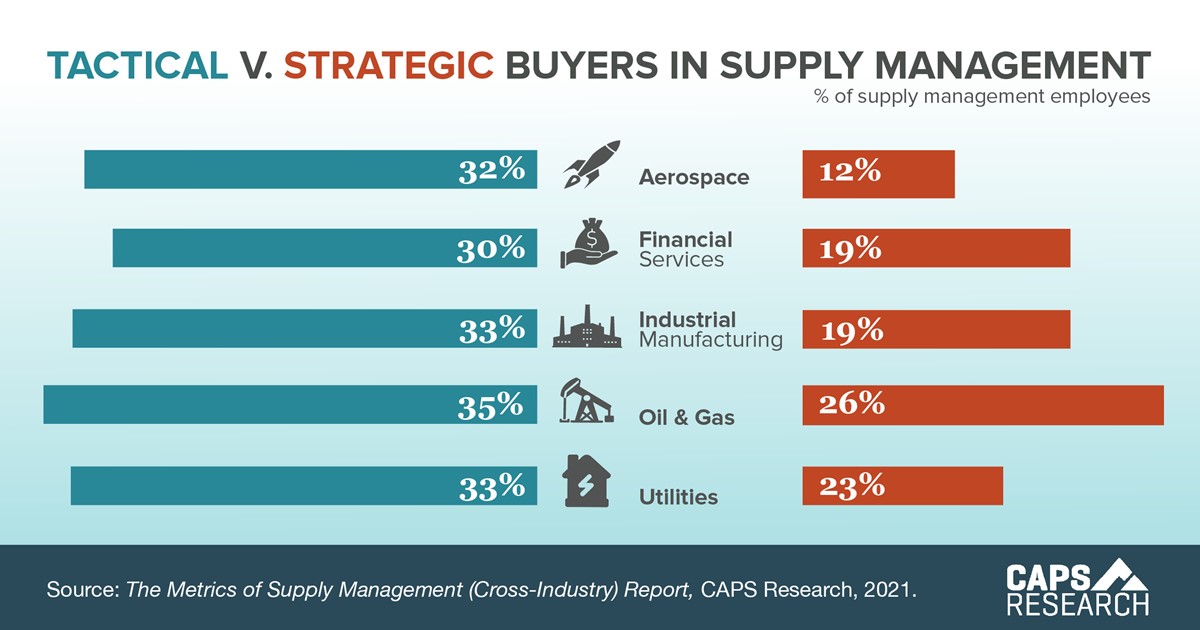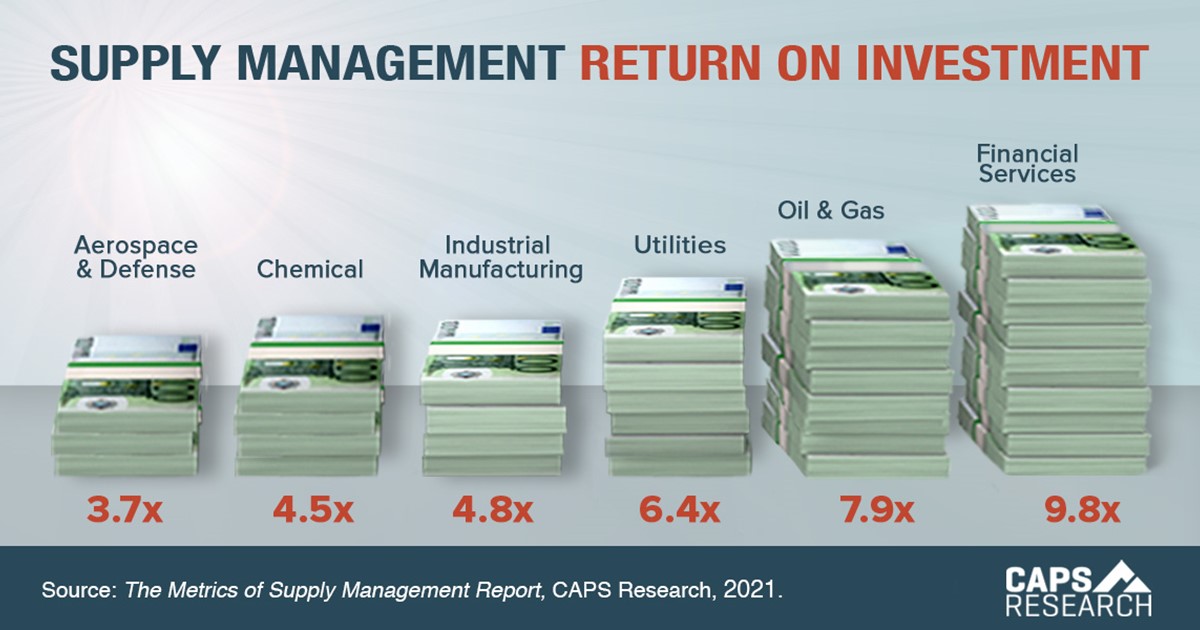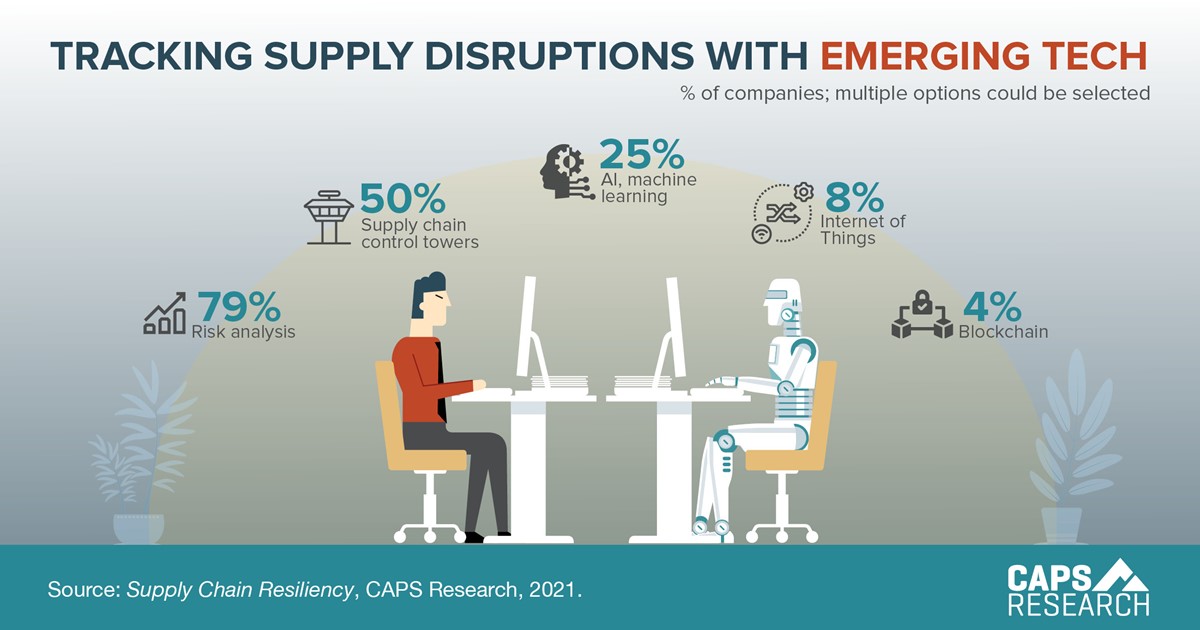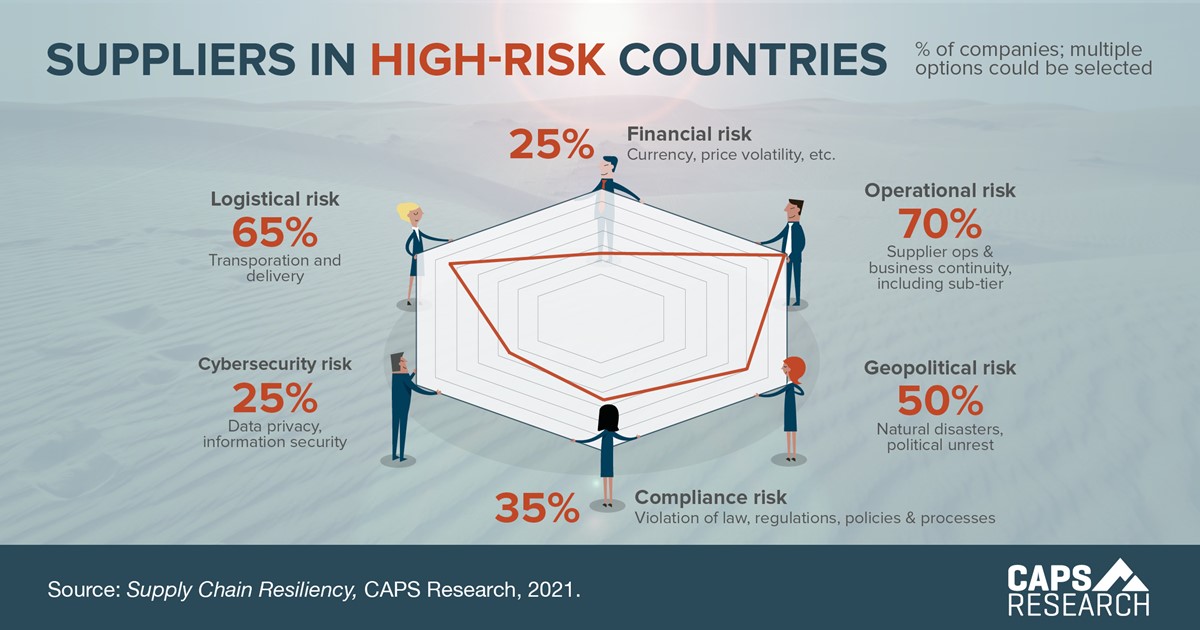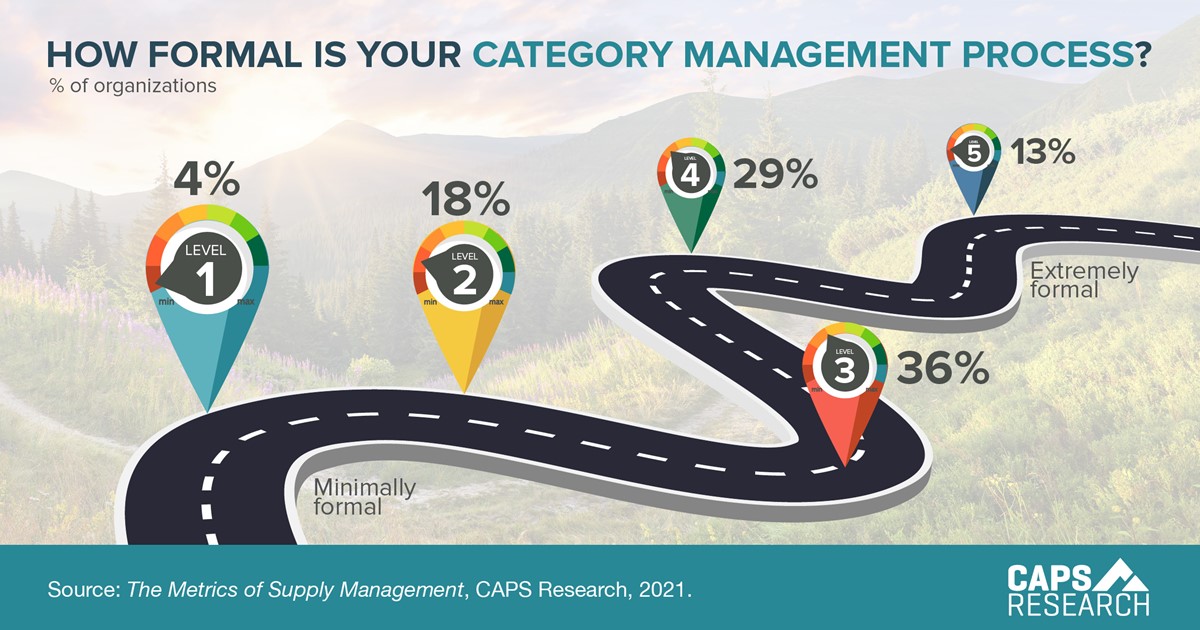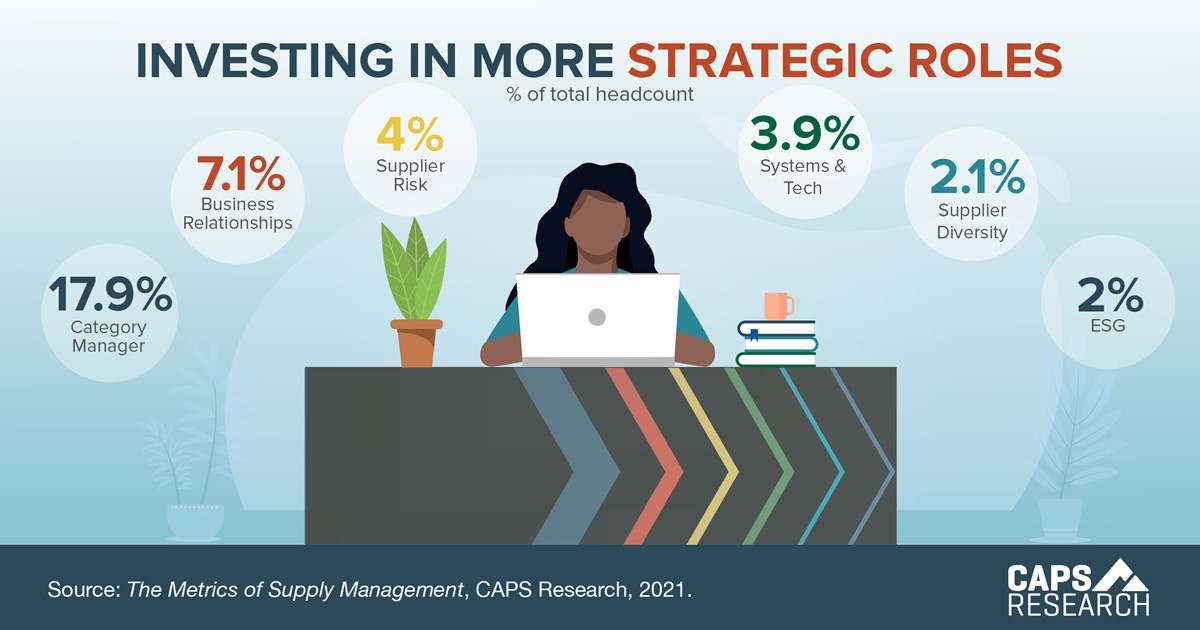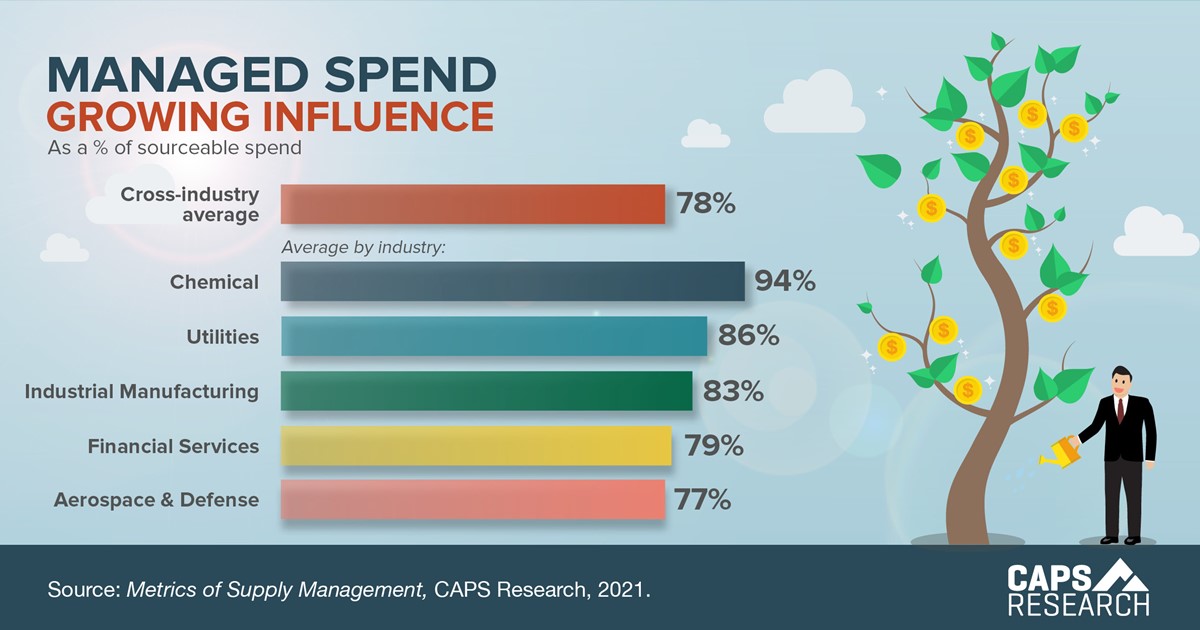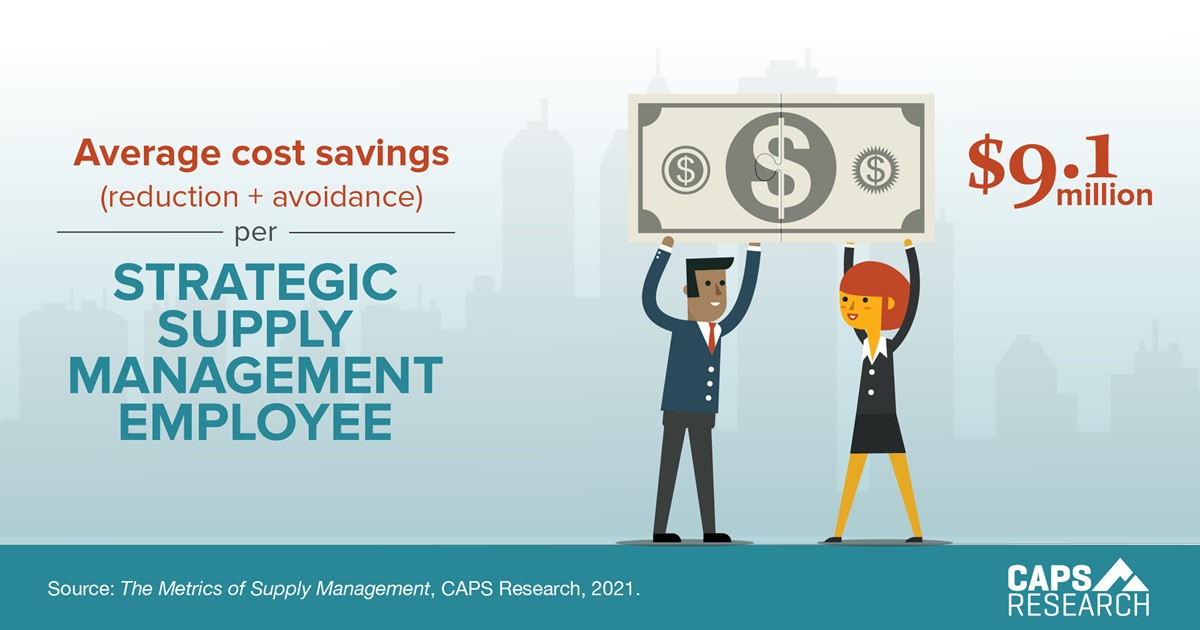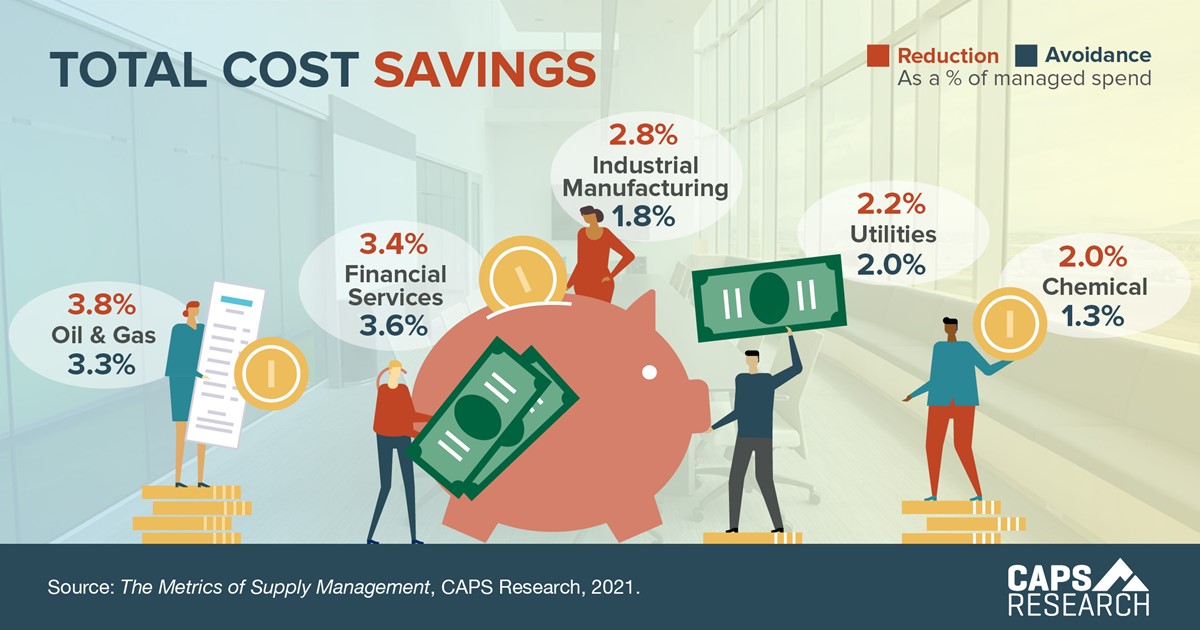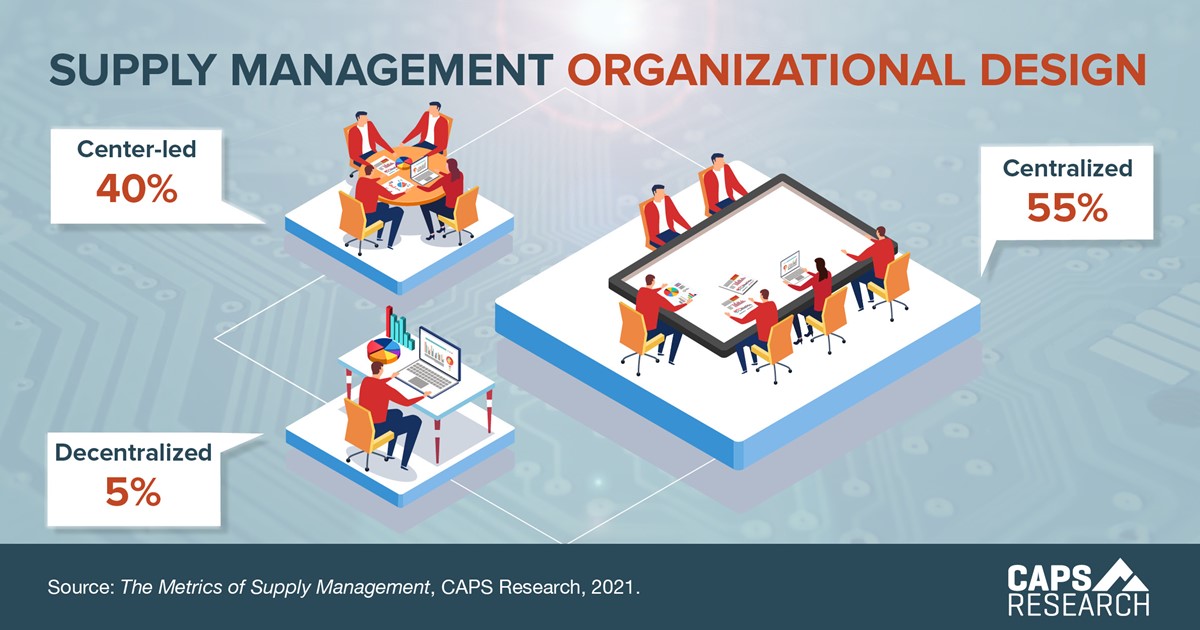Tactical buying remains the biggest focus for supply management headcount, claiming 35% of resources. Strategic sourcing has the potential to produce greater value, but these resources are a smaller portion of the team mix.
Supply management ROI
Supply management (SM) return on investment (ROI) is a simple way to communicate the value your supply management group delivers to stakeholders. To calculate your organization’s SM ROI, divide cost savings (reduction + avoidance) by supply management operating expenses.
Tracking supply disruptions with emerging tech
More than half of the companies we surveyed (59%) use emerging technology to identify and monitor disruptions in the supply chain. Although technology underlies each of these solutions, human-driven decisions still dominate the process of identifying and monitoring supply chain disruptions.
Suppliers in high-risk countries
Within the next 18 months, 49% of companies plan to shift supply away from high-risk countries to strategically adapt to supply chain disruptions. Companies say the top risks driving the move are operational (70% of companies), logistical (65%), and geopolitical (50%).
Category Management Process
More than a third of the procurement executives we surveyed (36%) ranked their category management process as moderately formal, while 13% said their program was extremely formal.
Investing in More Strategic Roles
In a 2018 CAPS report, 40% of CPOs chose strategic thinking as the most important capability to advance the profession strategically. Will alignment to larger business objectives going forward require greater headcount working on strategic initiatives?
Managed Spend Growing Influence
When the business involves the supply management group in purchasing and sourcing, it can increase savings, better leverage organizational spend, and negotiate stronger contracts. Managed spend, as a percentage of sourceable spend, is a primary indicator of a company’s ability to capture value from the supply management process.
Average Cost Savings
Cost savings is a powerful KPI for demonstrating the value of supply management (SM) to the business. On average, 21.8% of SM employees are in a strategic sourcing role, each delivering $9.1 million in total savings. How does your company compare?
Total Cost Savings
Cost savings is a cornerstone KPI for most supply management groups, measured here as reduction and avoidance in managed spend. In 2021, Oil and Gas led with 7.1% total cost savings.
Supply Management Org Design
Non-members can receive the report of each survey they submit.
Members can access all reports, but are encouraged to submit surveys to
increase the comparative breakouts only they receive.
